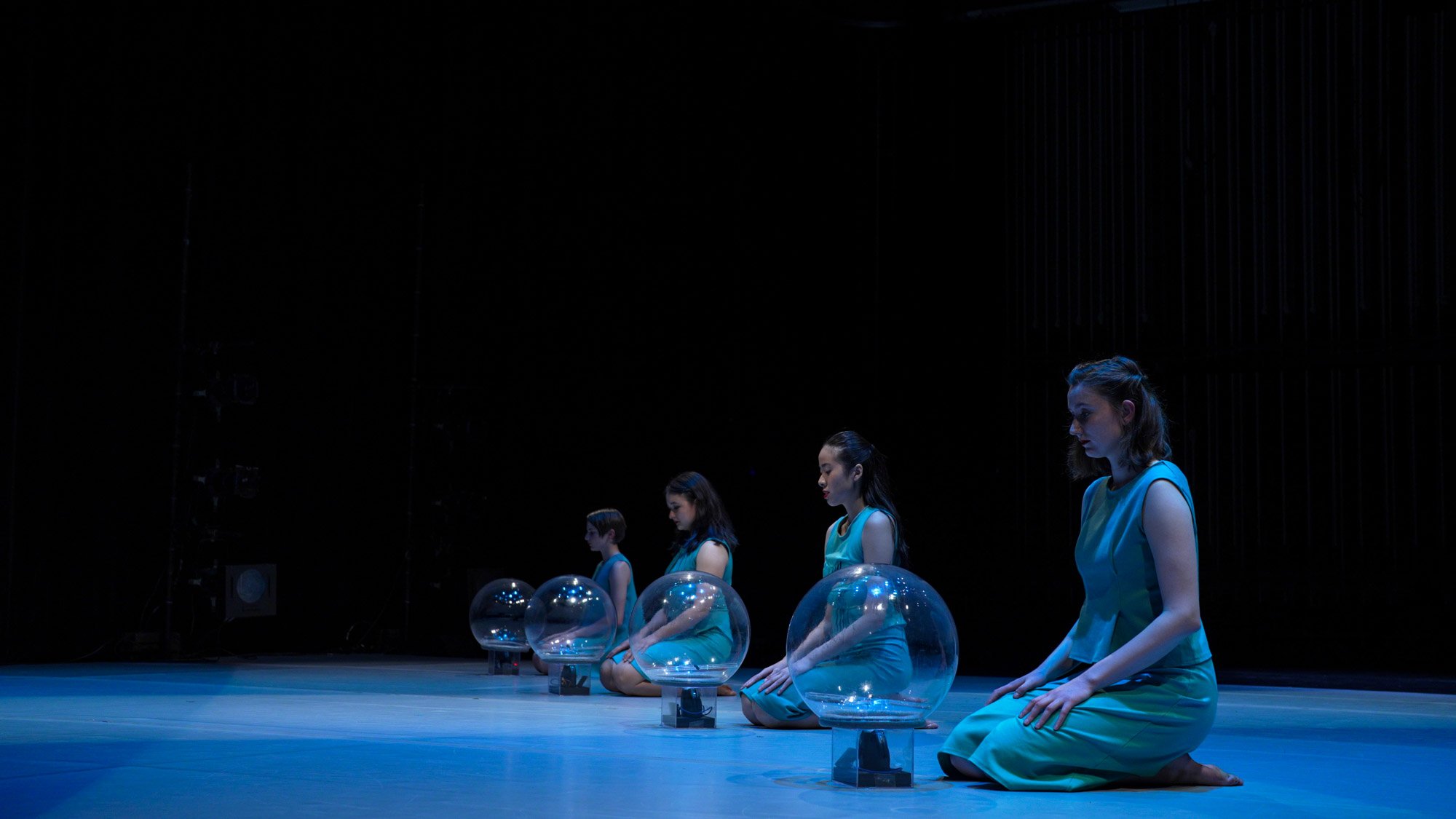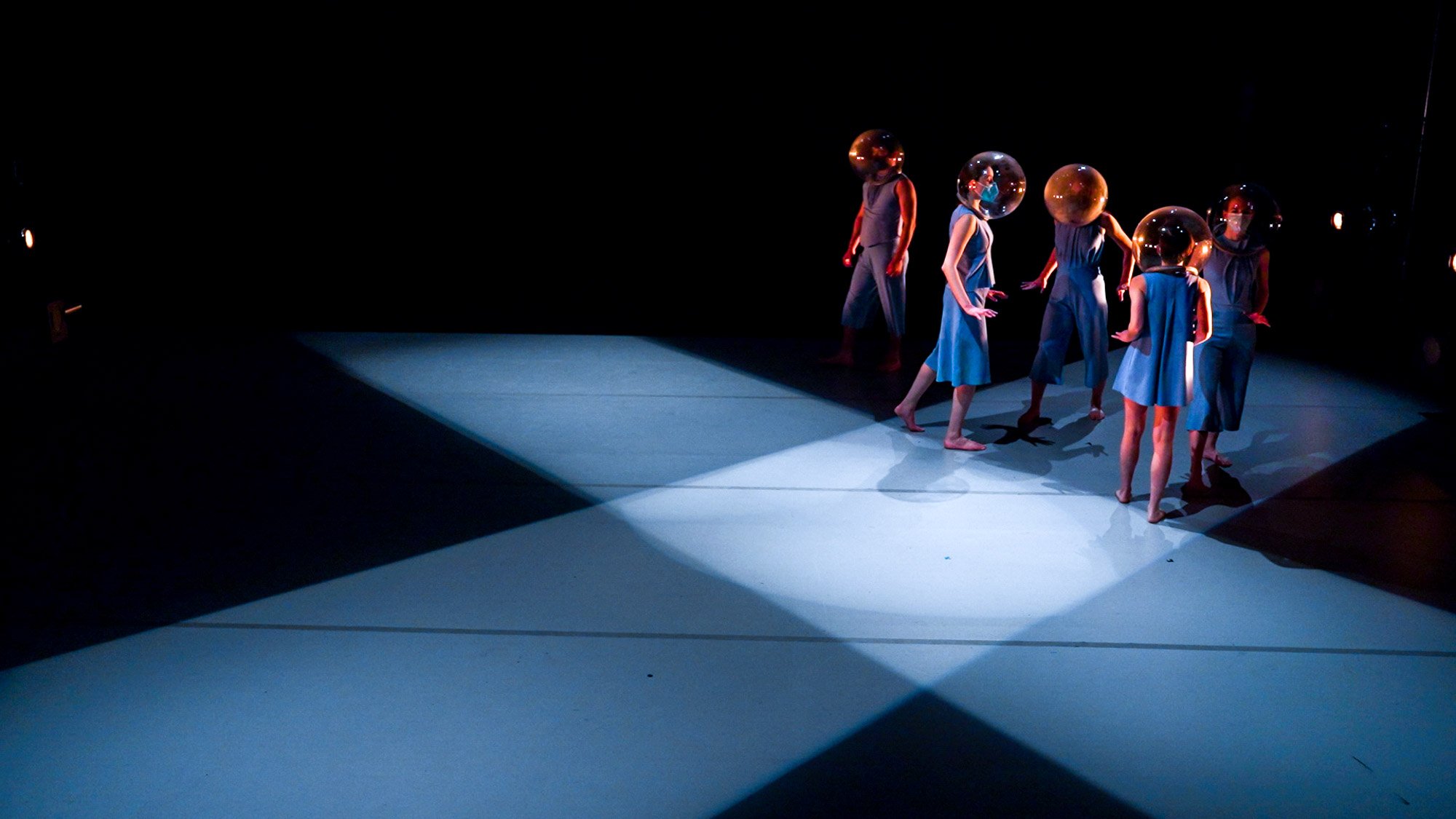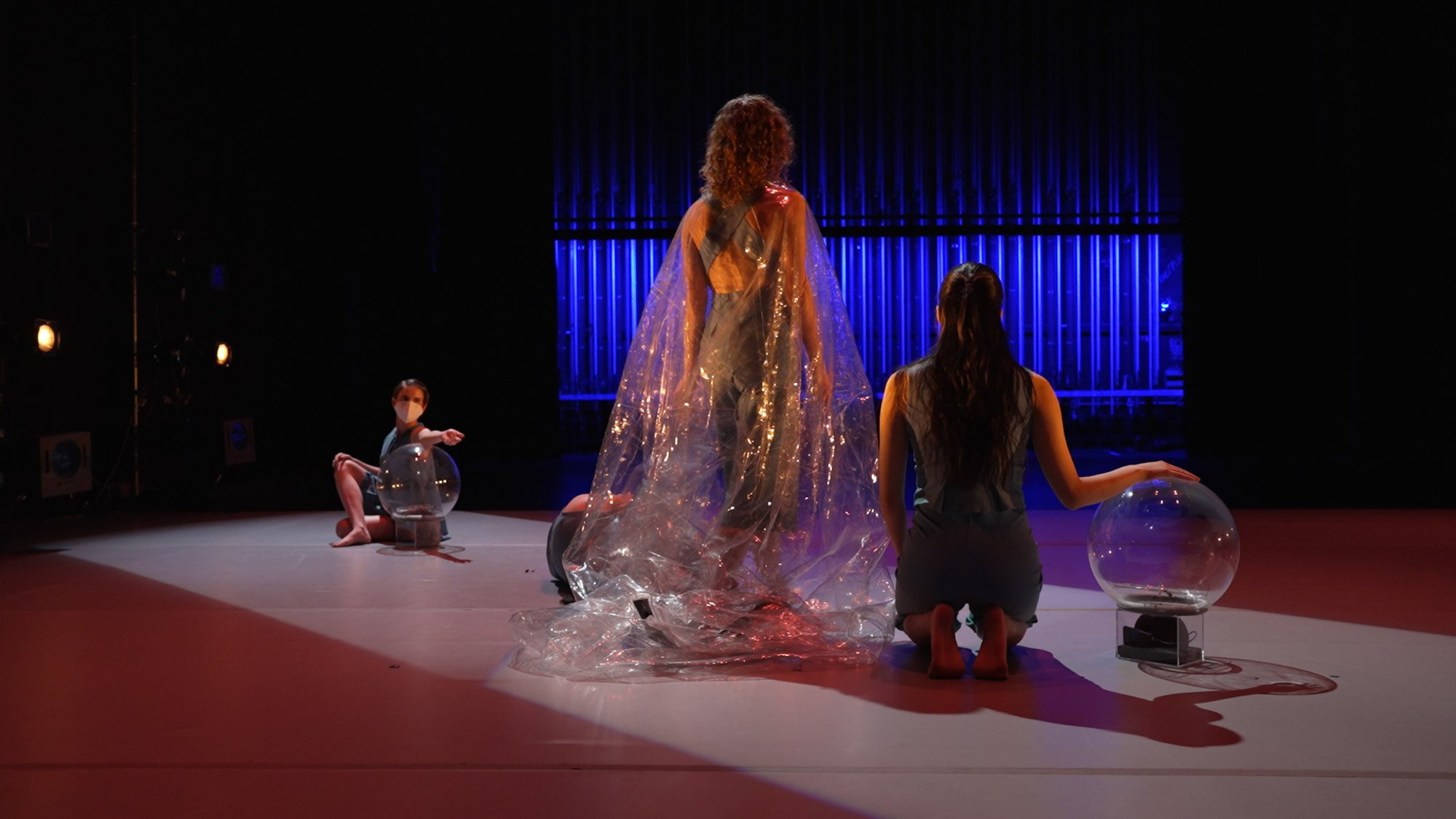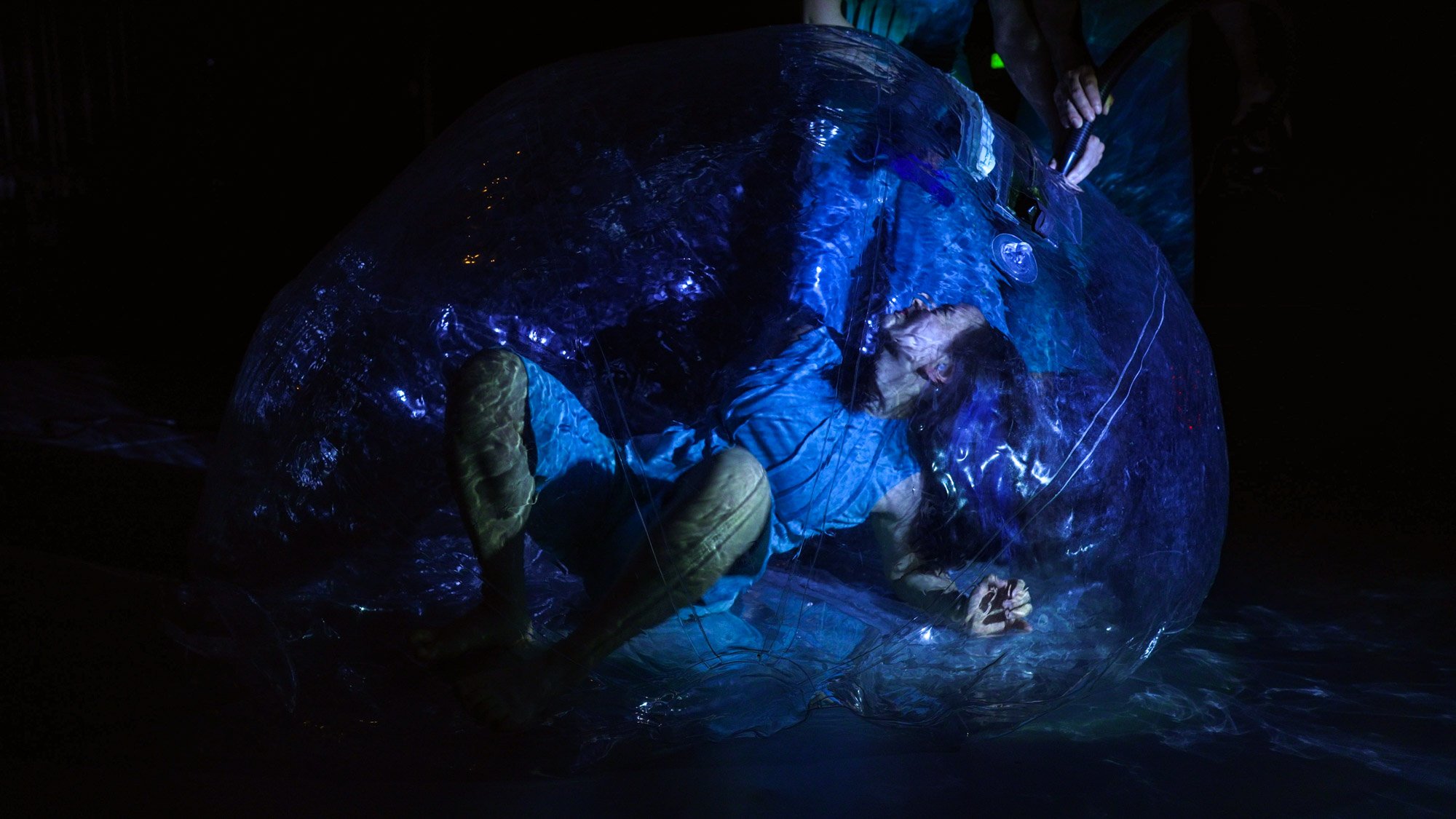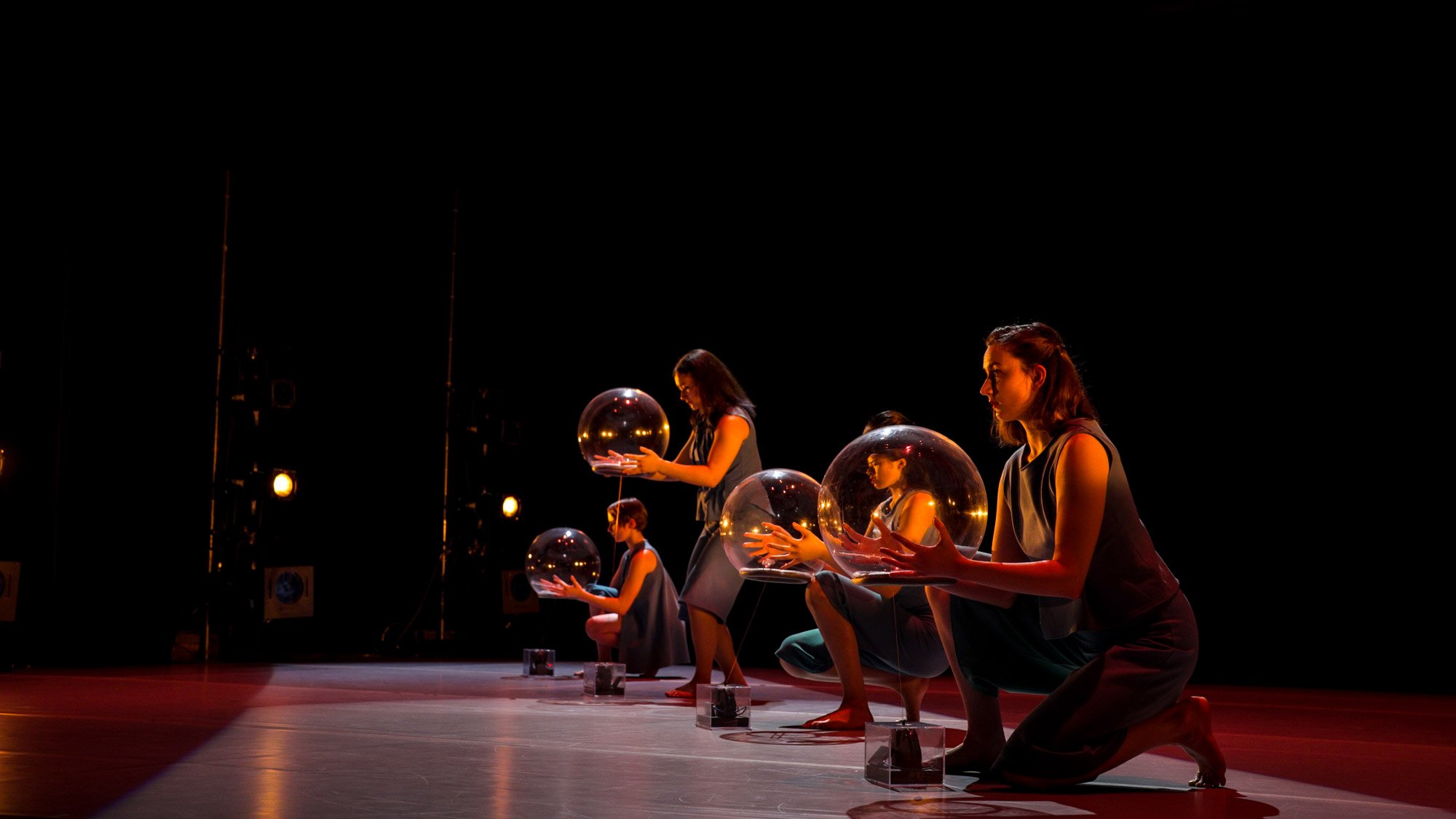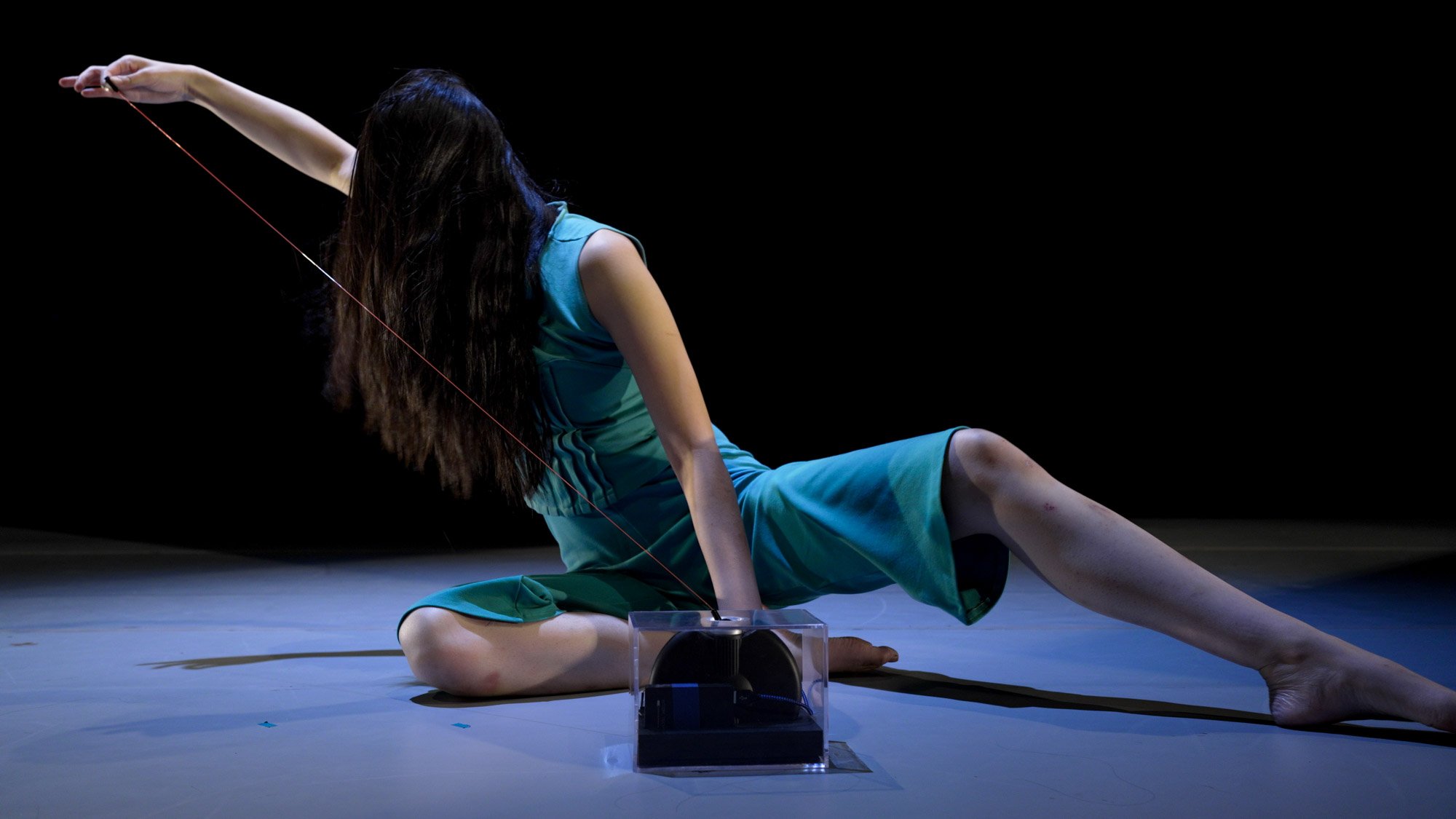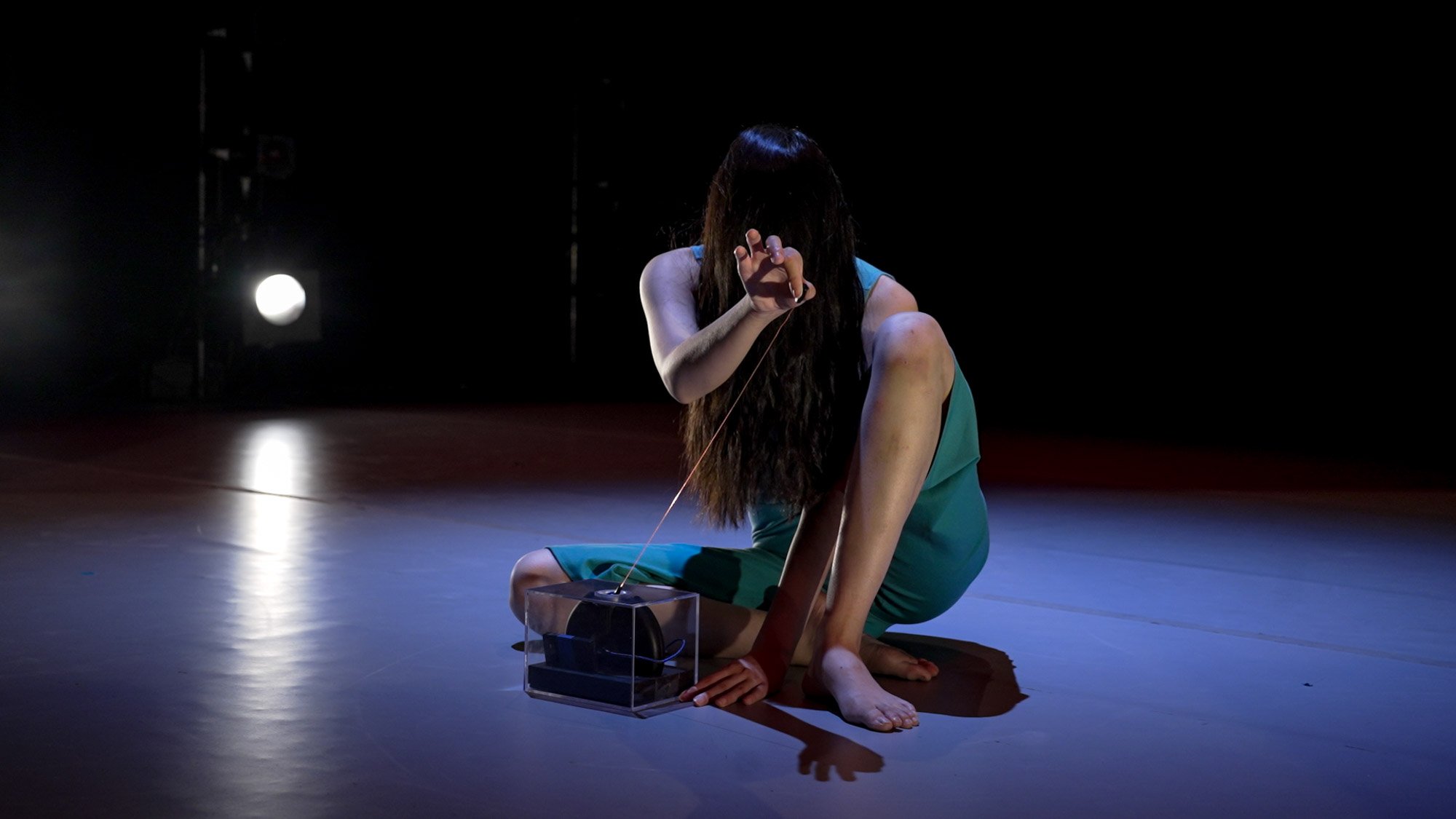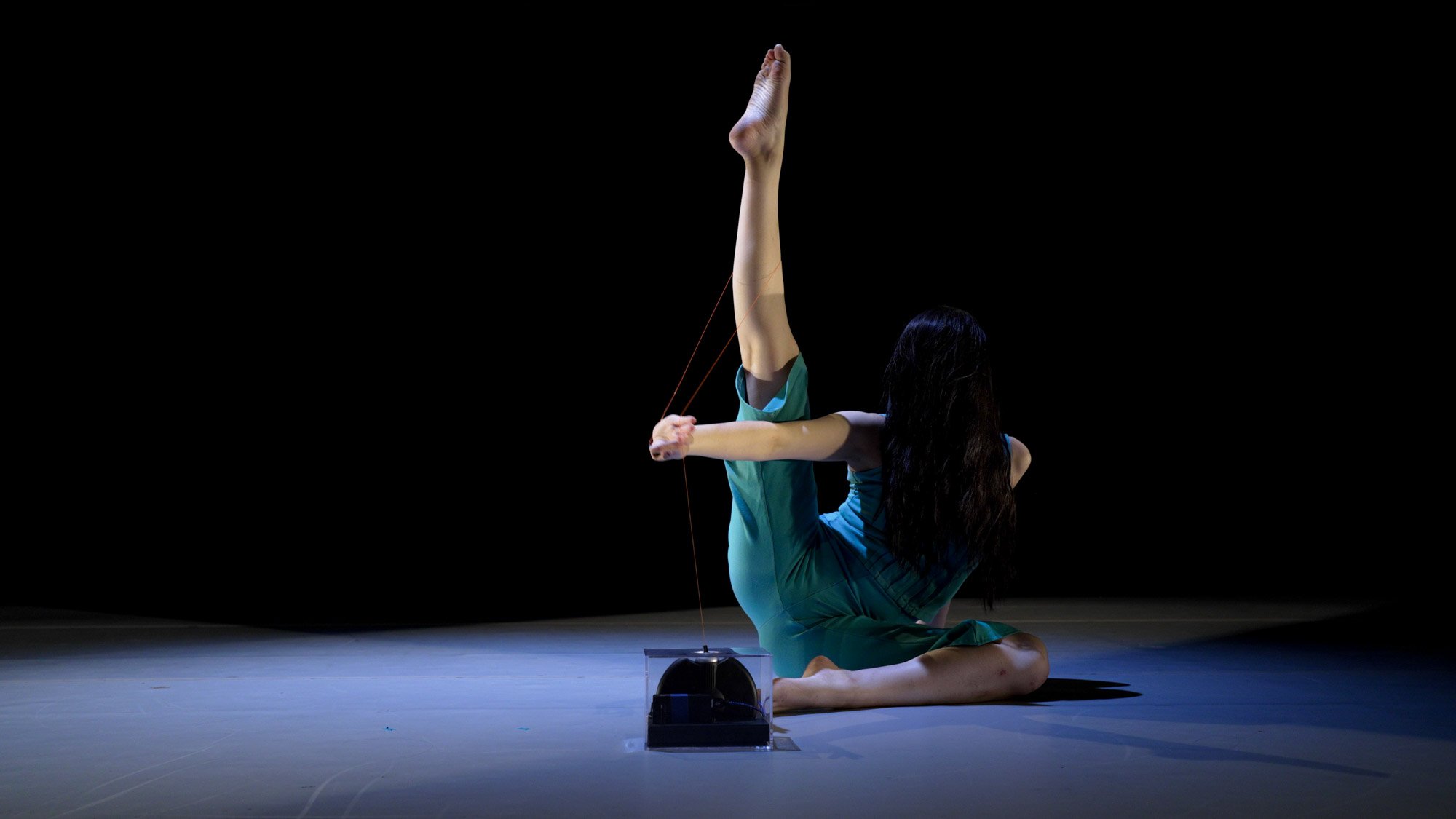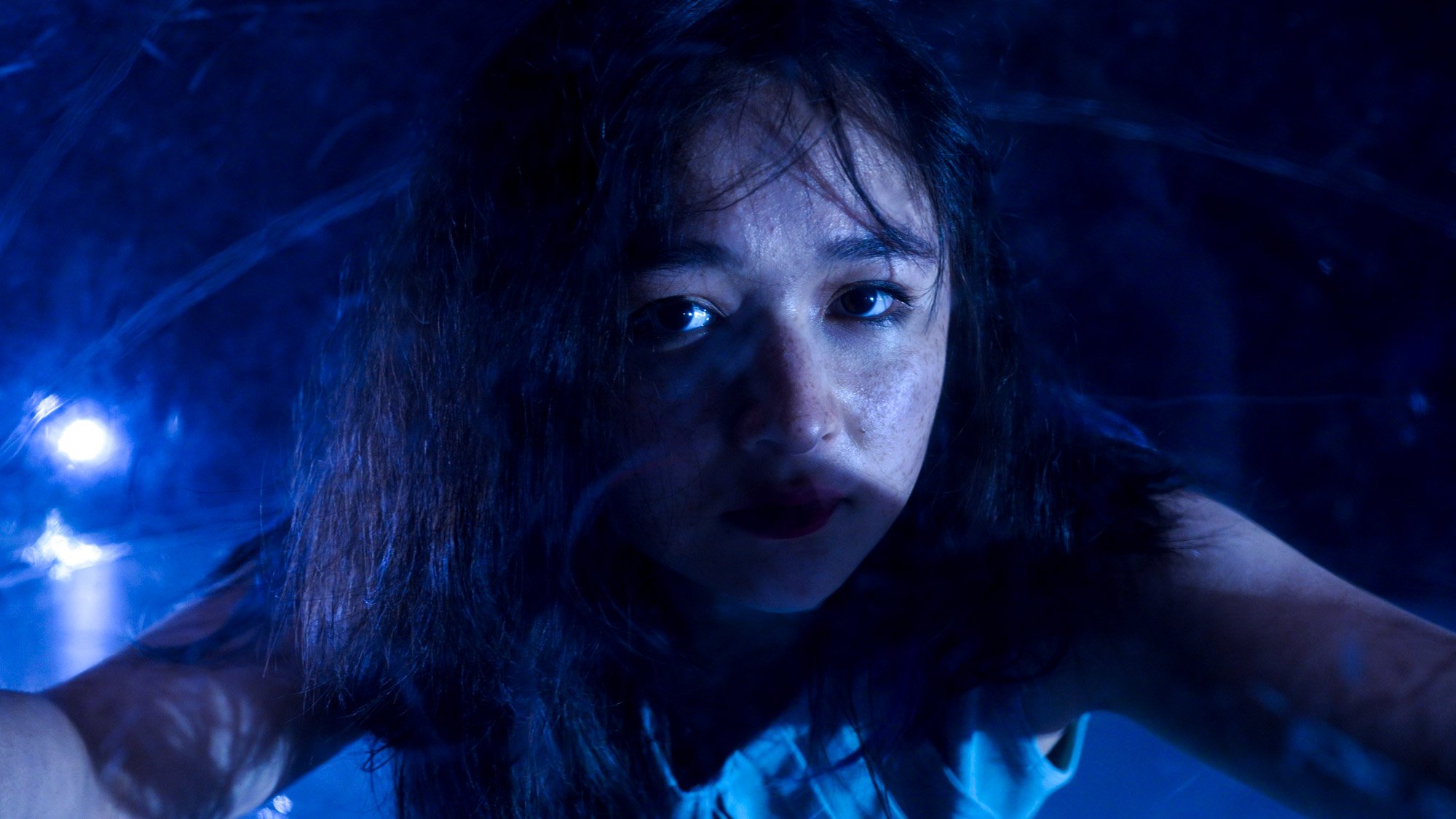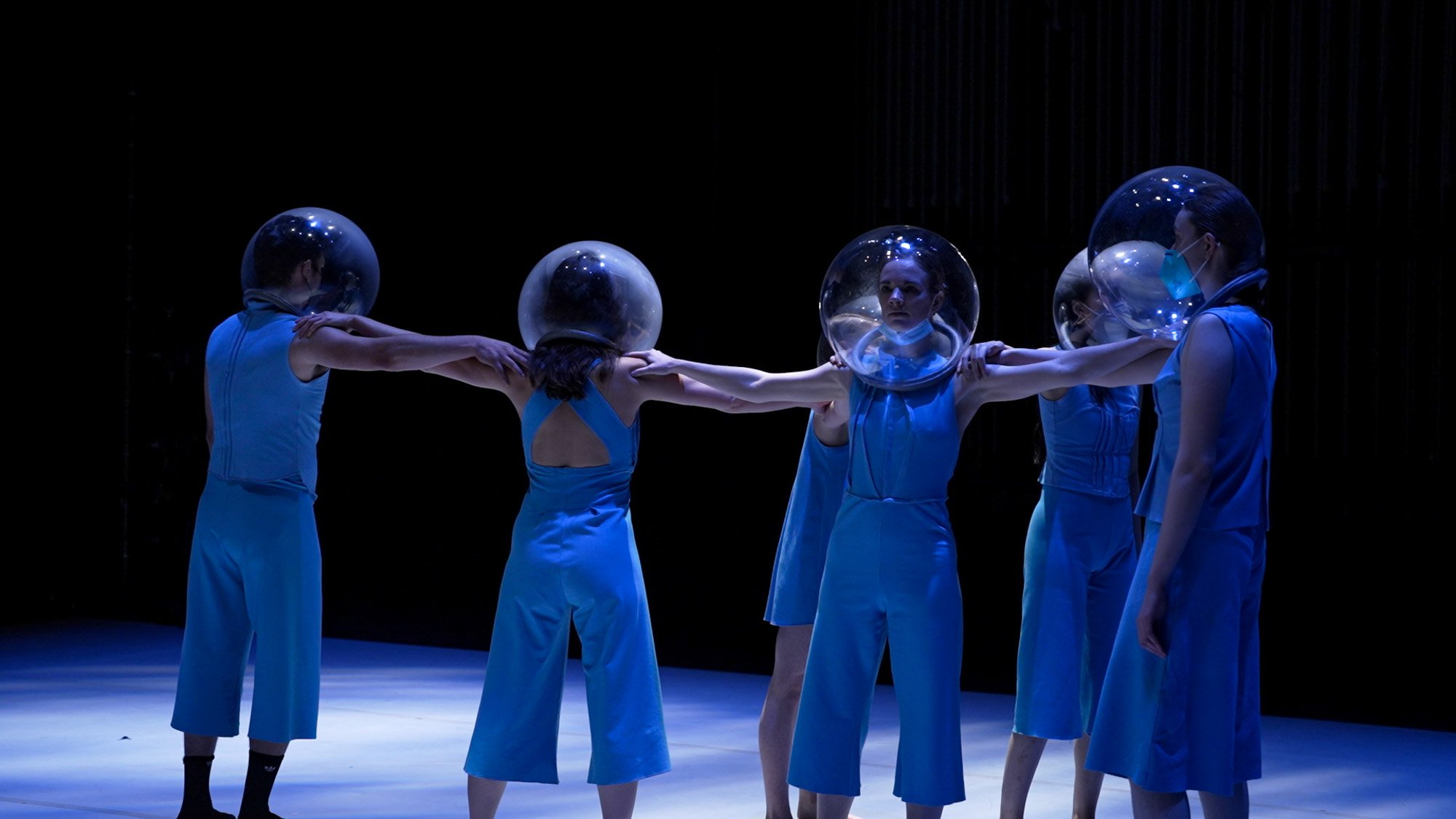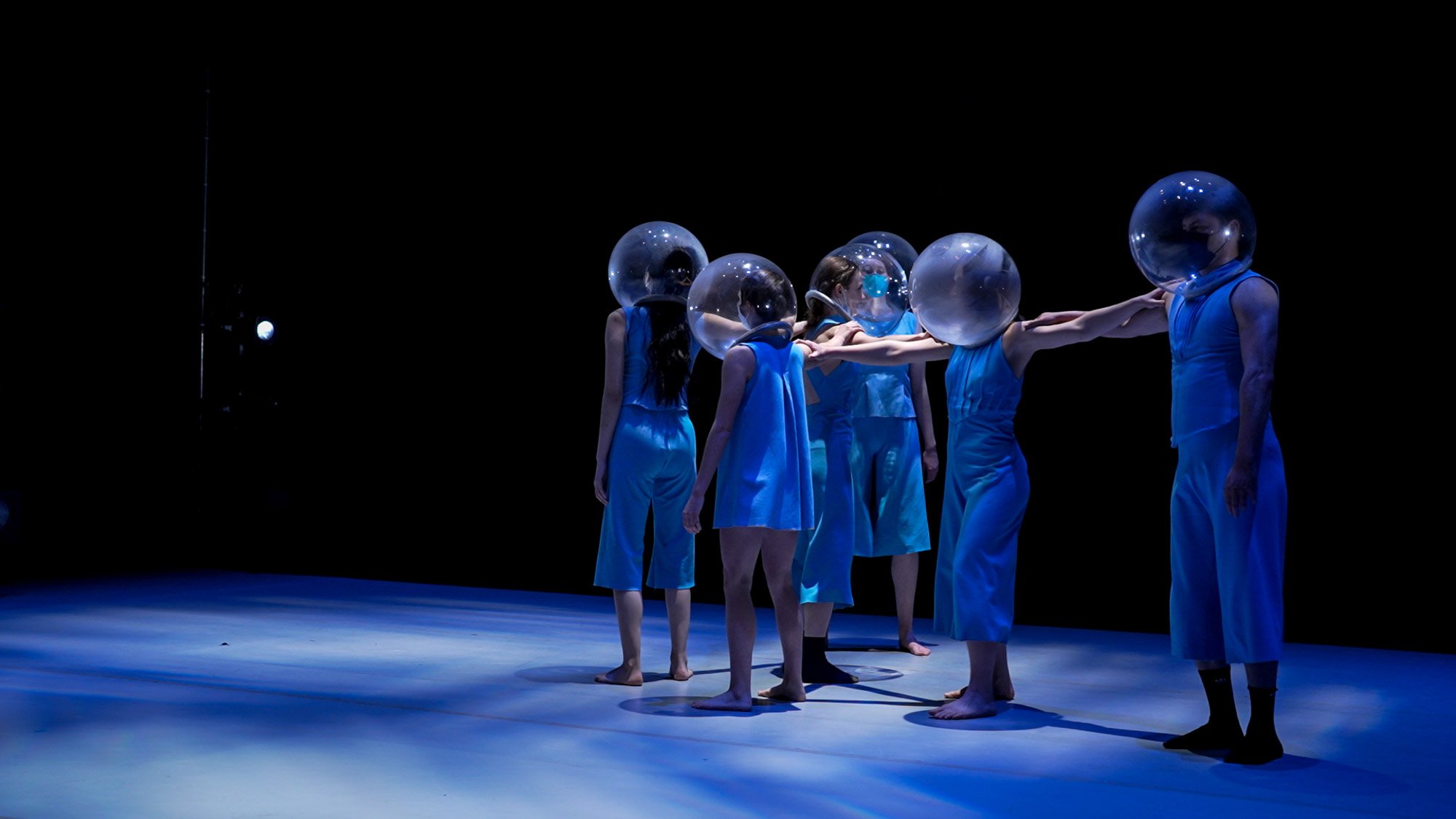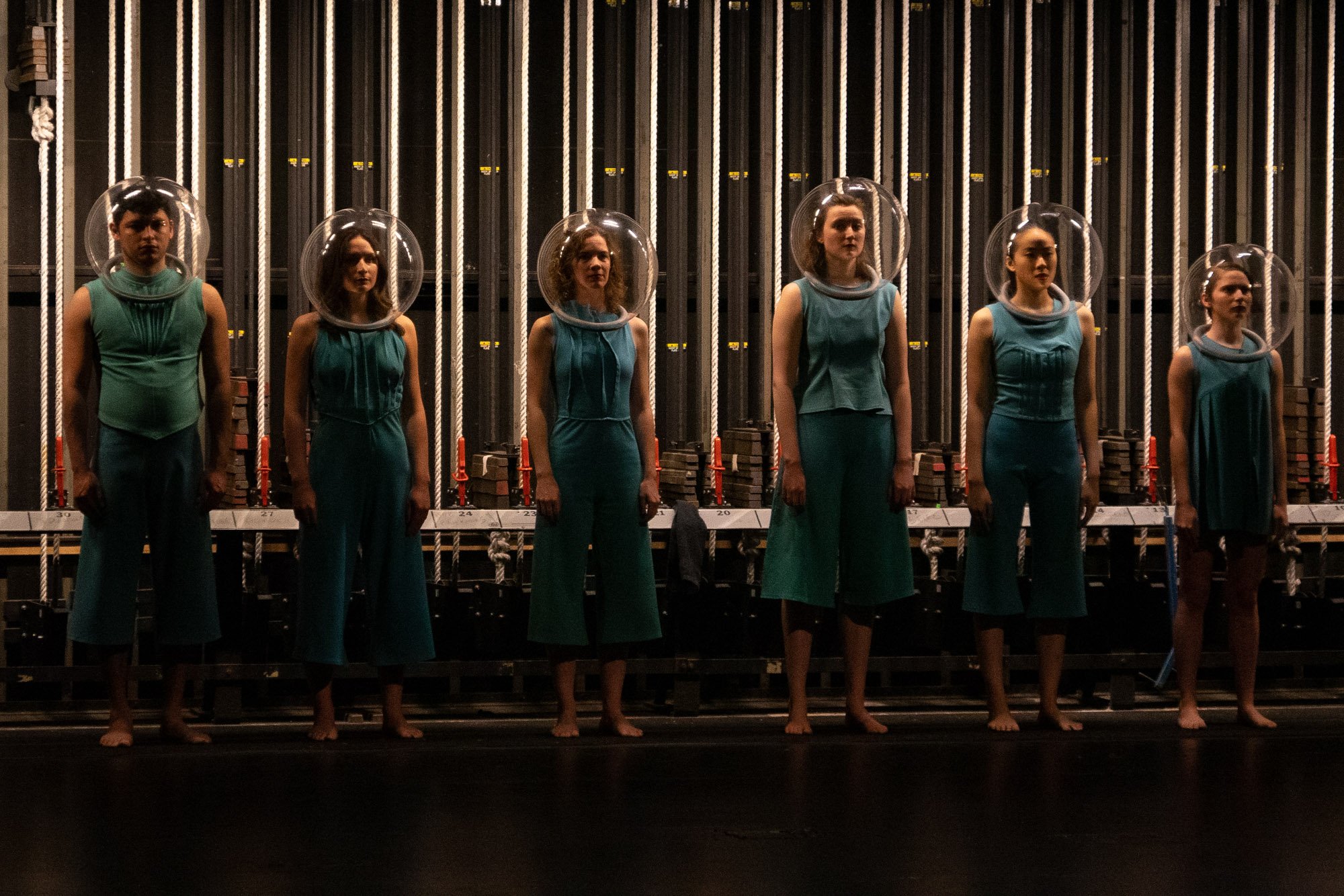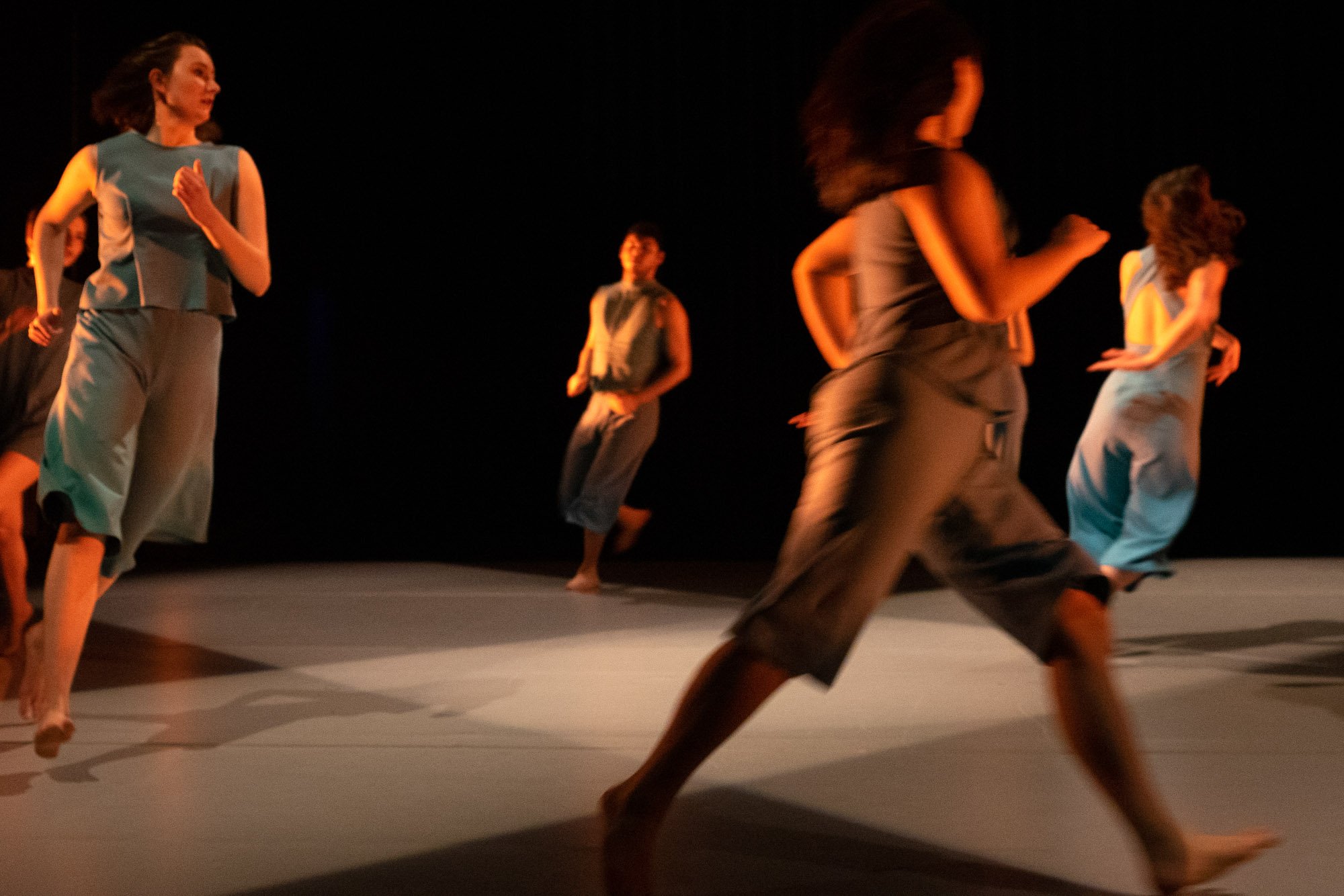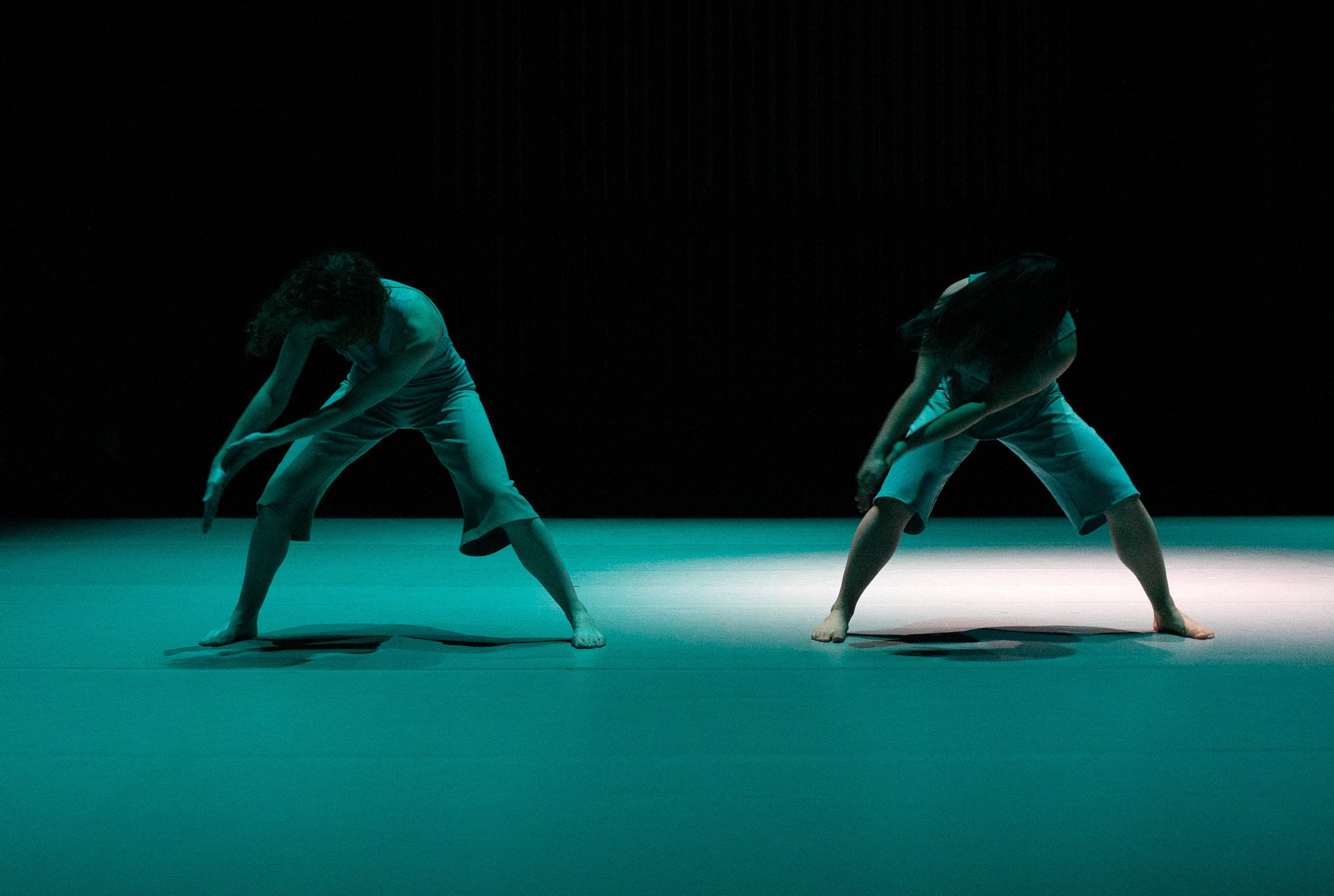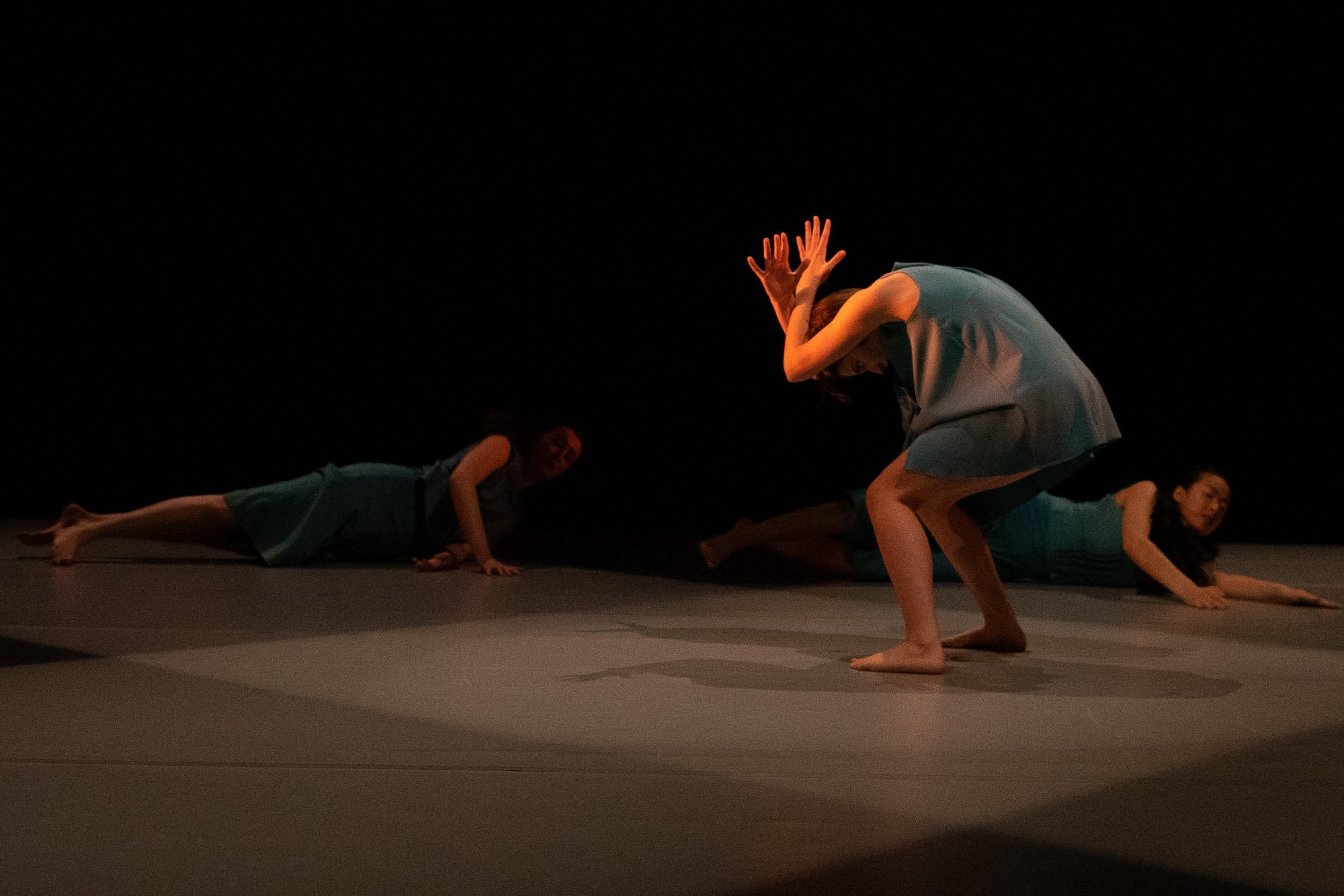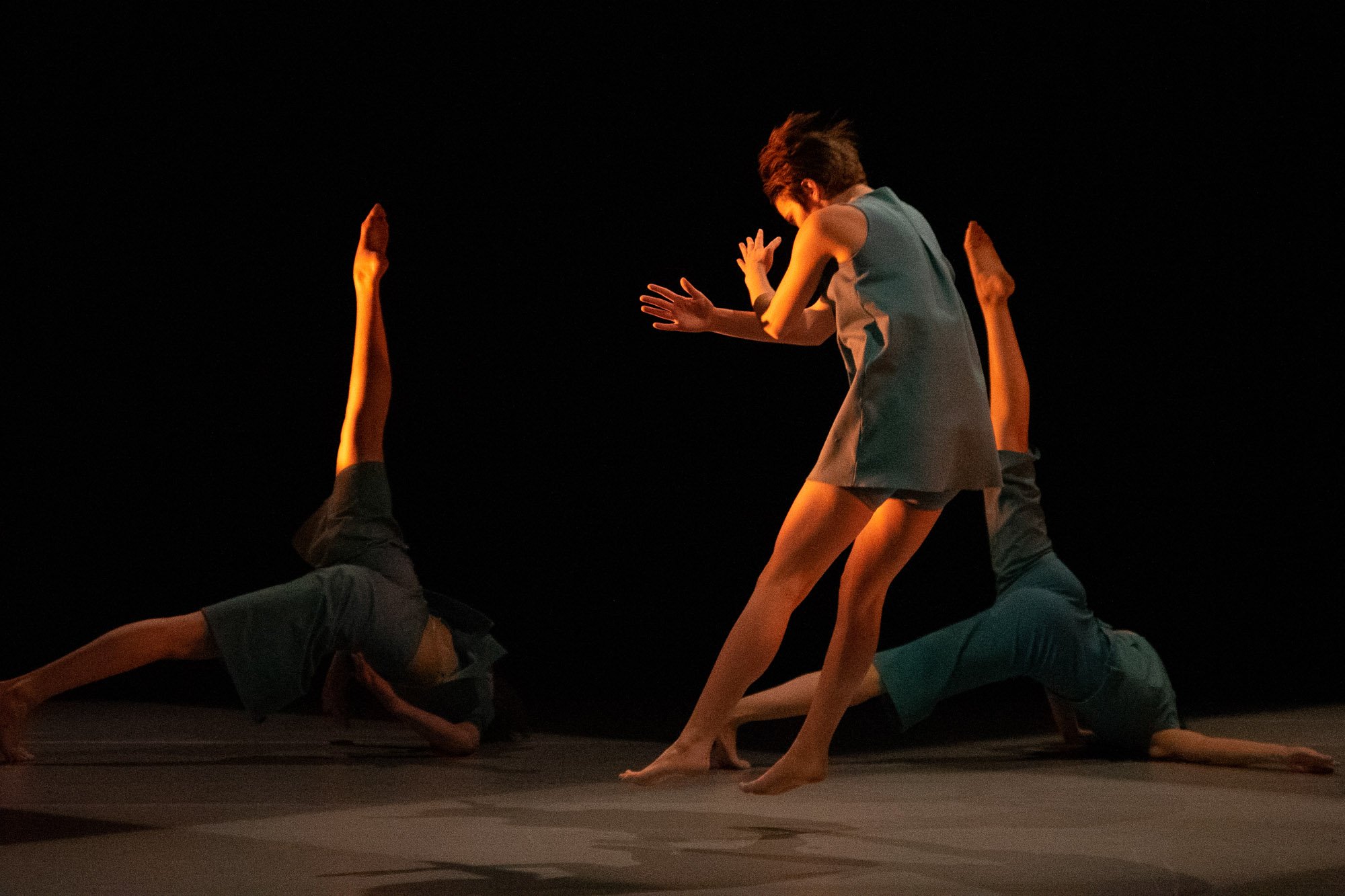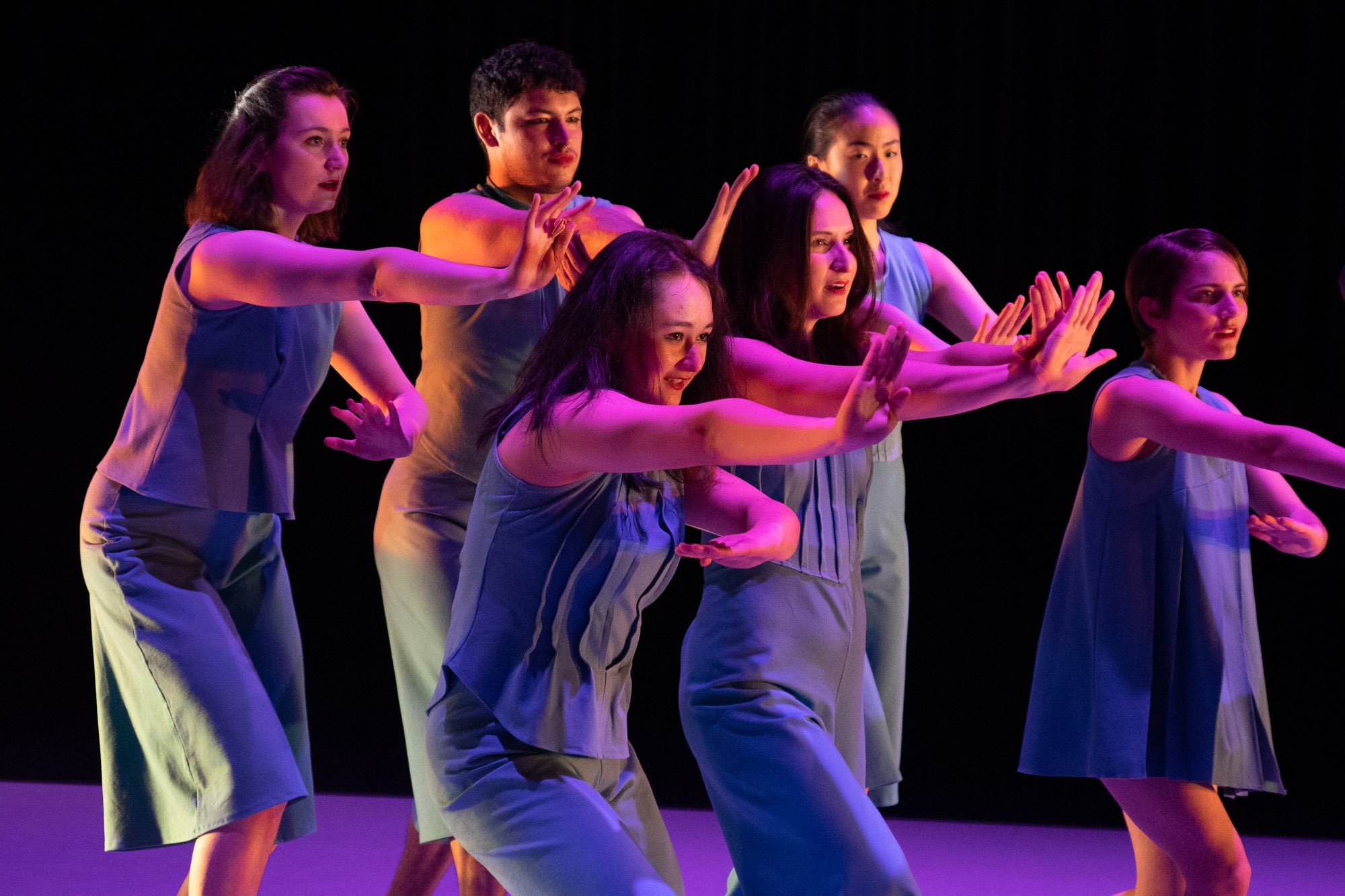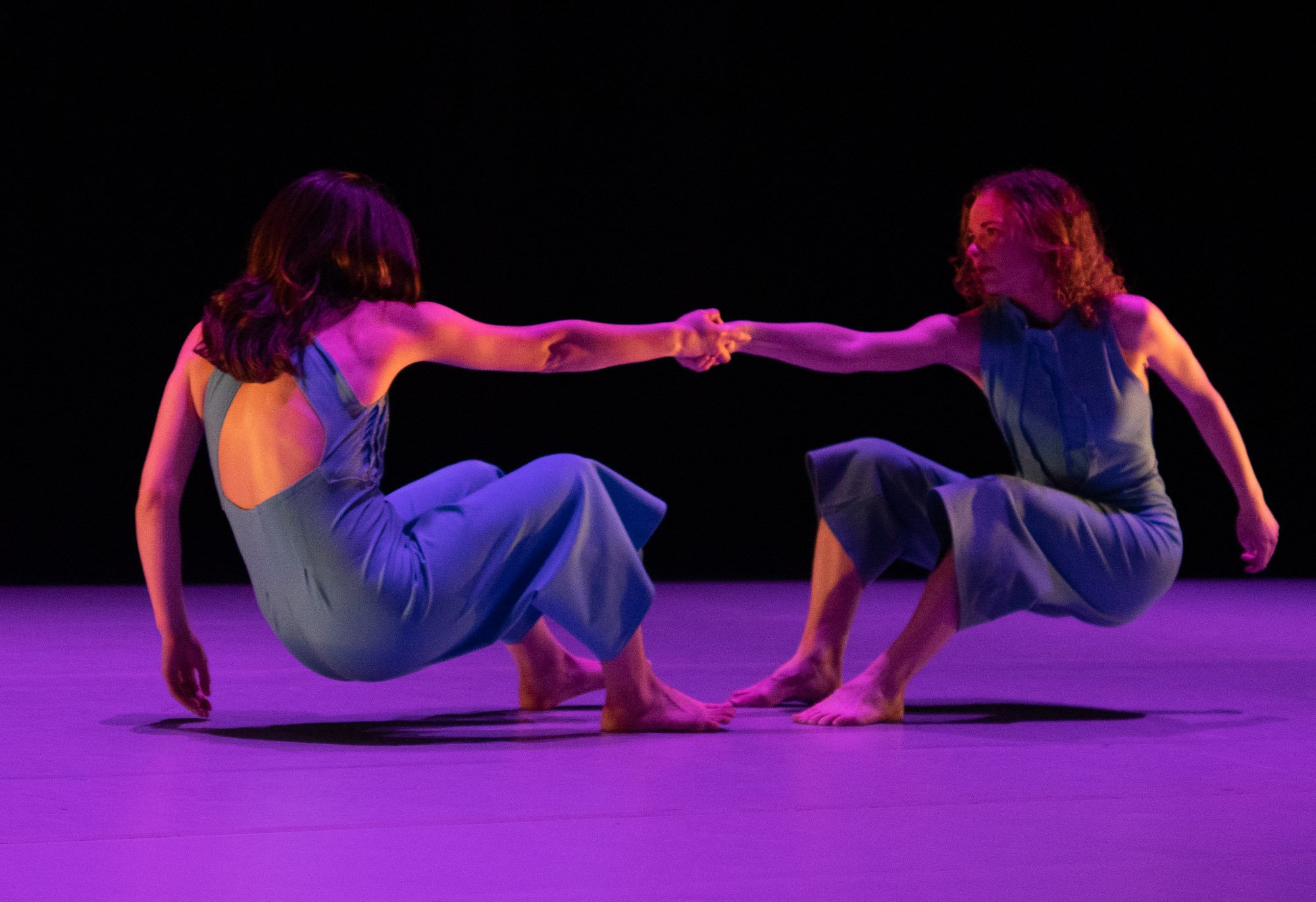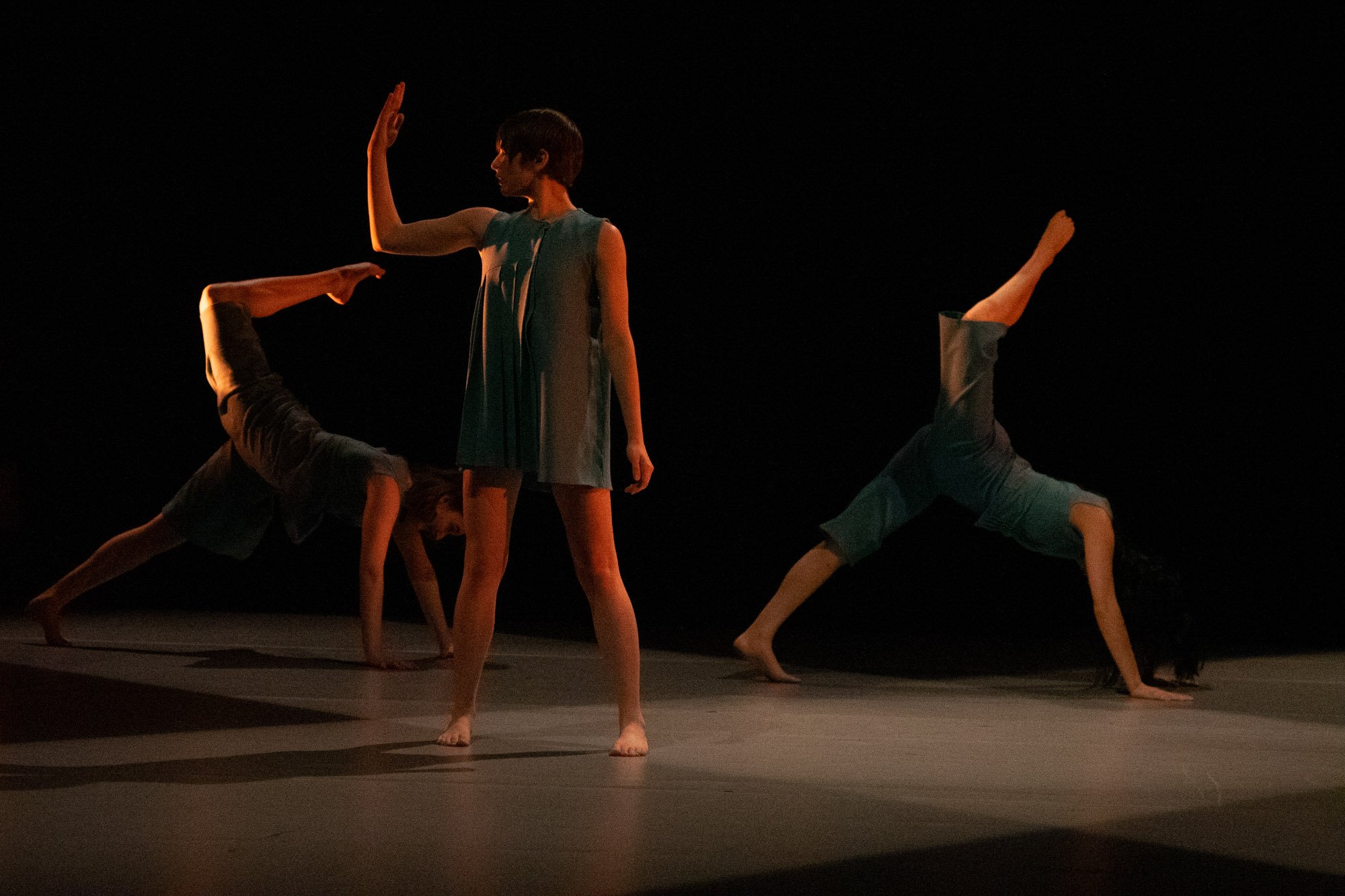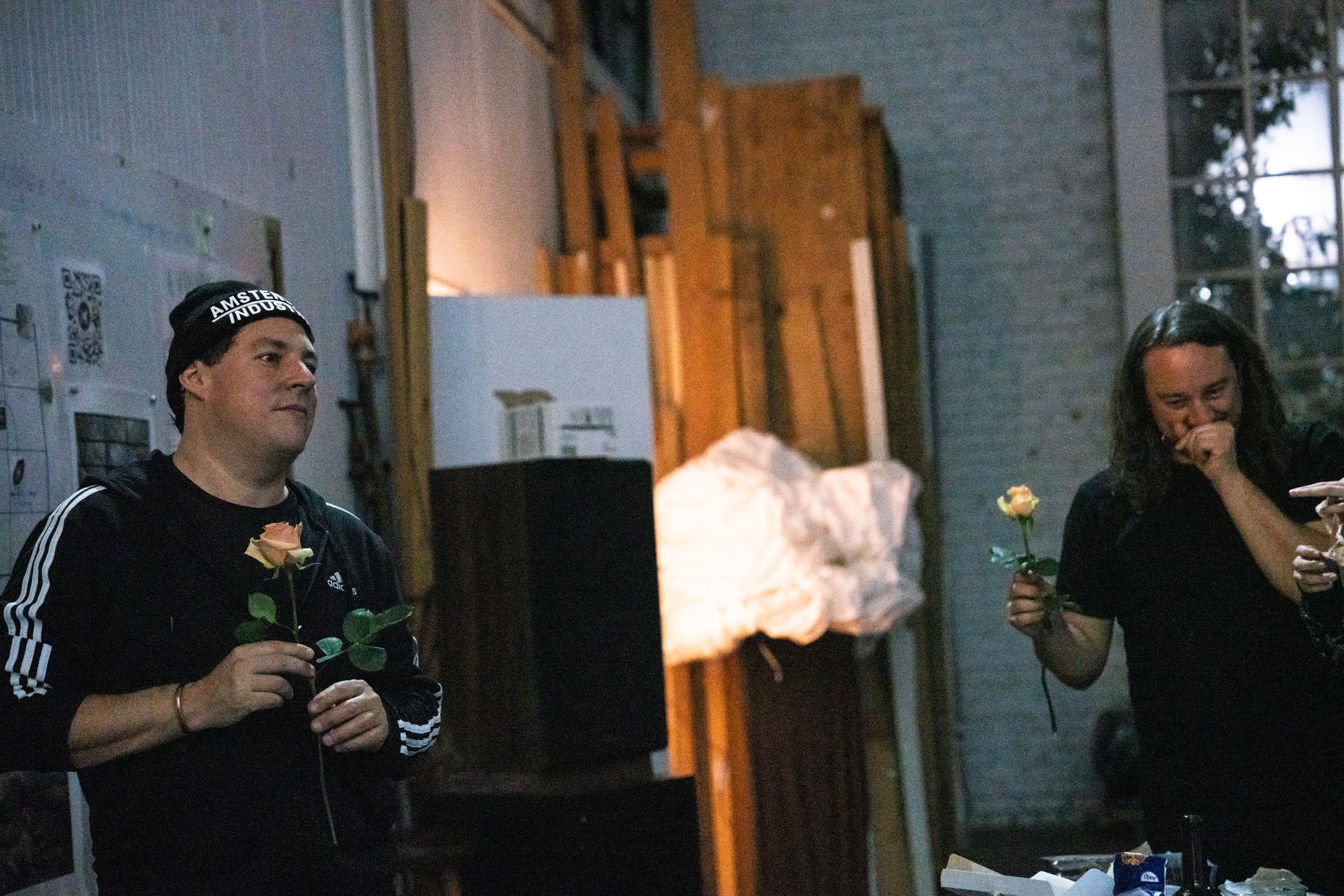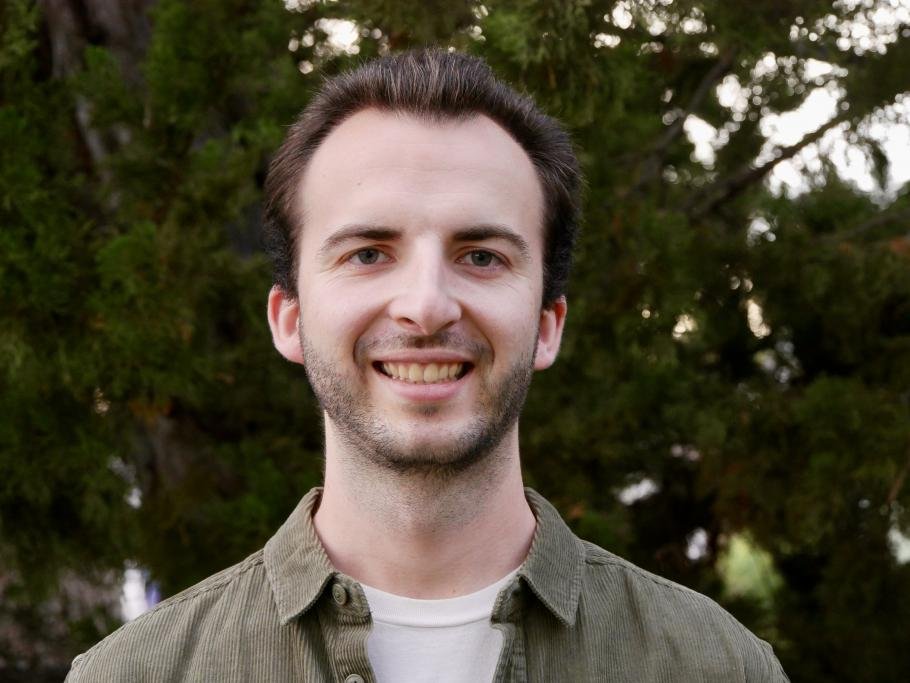Detour
Zellerbach Playhouse, UC Berkeley,
February 2022
Detour reflects on the uncertainties, fear, and solitude of our contemporary society, aided by the examination of their close parallel to scientific concepts of chaos, order and entropy.
In the era of pandemic, hyper-technology, and political polarization, bubbles are created for physical safety, ideological validation, and emotional comfort. In Detour, a human sized hamster ball and several translucid helmets create separation and isolation both spatially and emotionally.
Several homemade string instruments both confine performers’ movement and transform it into an emotional soundscape through a set of algorithms. Those algorithms were developed to echo the chaos, order and entropy we have experienced over the past years.
Together, those bubbles and instruments create a surreal landscape, a lucid dream infused with solitude and a yearning for human connection. It is on this strange landscape that an unexpected journey unfolds exposing the tension born in times of profound change.
Detour embraces the transience and uncertainties of each moment—and the infinite future possibilities that are inevitably collapsed into memory as we pass through time.
Pierre (Left) and Miguel (Right) after Sublimation performance. October 2022, Oakland.
Original Music Score
The original music score for Detour was created by the trio of Miguel Mariaca, Pierre Mariaca, and Jose Solares Jimenez.
Interactive music
The performance involves several home made music/sound instruments hacked from components found in Sony Gametrak controllers. Dancers will pull a string from each of 4 gametrak boxes to create a soundscape based on algorithms developed by music researchers.
Dancer: Joyce Chan
The Device
Hacked from a 2007 Sony Gametrak Controller, we wired the analog output of the angular and distance sensors to ESP32 microncontroller ADC pins. Powered by battery, ESP32 then digitizes the motion signal, stream to computer over dedicated WiFi.
Raw data includes 3 dimension of movement (Pitch, Roll, and Distance), sampled at 90 samples per second. A set of secondary measurements were calculated based on those measurements: velocity, acceleration, suspension, energy, etc, which was fed into music algorithm.
The Patch
Luke Dzwonczyk, M.A./Ph.D. student in music at UC Berkeley, and an active member of CNMAT, created music patches using Max/MSP to convert motion data collected from the devices into music and sound score. For the final group scene, he transformed sound samples from Tibetan Singing Bowls into frequency domain. Allowing dancer’s movement to modulate the temporal response of each individual frequencies.
Max/MSP Patch for Solo
Max/MSP Patch for group symphony
Inside Bubble
Dancer inside the bubble: Katerina Bousleli. Dancers outside the bubble: Felicitas Fischer, Alex Law, and Kat Lin
Video recorded at Mondavi Center, UC Davis
Detour was produced by Berkeley Theater, Dance, and Performance Studies as part of Berkeley Dance Project 2022.

